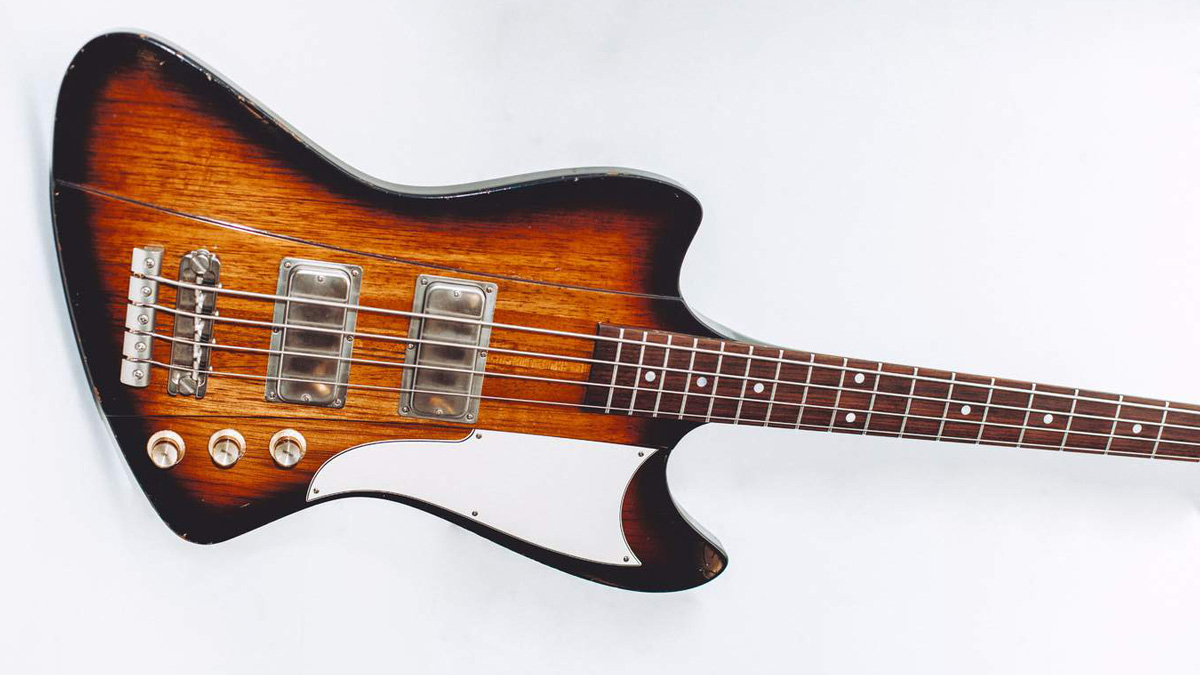MusicRadar Verdict
A very playable bass with some impressive passive tones.
Pros
- +
Balance issues solved.
- +
Strength of components.
Cons
- -
Visually, not an all-rounder.
MusicRadar's got your back
For many players the Gibson Thunderbird, hung low and ready to rock, is the bass design.
Used and abused by an intimidating rollcall of legendary bassists, it’s an icon in our world - but for all of its swagger, the design is not without flaws. Broken headstocks, neck damage, balance problems and playability idiosyncrasies are just some of the woes that plague the T-Bird faithful, so we were interested to see what Dutch luthier Sander de Gier had in mind when he announced the Lowlander model. This is not a copy of the original Gibson but rather Sander’s reinterpretation, made after studying the measurements and design of various original models. Has he pulled it off?
Build
The Lowlander opts for Spanish cedar as its body and neck timber, instead of the more traditional mahogany. This has meant that de Gier has been able to circumvent the brittle nature of mahogany, as well as keeping the overall weight of the instrument down - this is no small thing, considering the weight issues of most Thunderbirds. The through-neck design uses the cedar timber alongside walnut for a smoother tone and greater stability in a nine-piece laminate.
Thunderbirds are renowned for their headstock and neck issues, and de Gier has addressed these areas by incorporating graphite rods through the neck and headstock for rigidity and reinforcement. A falute, or neck heel, has been incorporated where the neck and headstock cross over, adding extra strength at the weakest point to reduce the chance of snapping. The string tension is also slightly reduced due to a reduced headstock angle.
The body shape has been maintained, aside from a few cosmetic changes. Although there is some headstock bias, there are certainly none of the headstock dive issues that were so evident on the original instruments. While a variety of colours and finishes are available, our review example sports the traditional vintage sunburst that works so well with the dark timber, as well as a white scratchplate, chrome hardware, a rich rosewood fingerboard and mother of pearl position markers (white dots have been used on the side of the neck).
The C-shaped neck profile is substantial, but it’s no less playable for it. Contouring to the body was never a feature of the Thunderbird, and while Sander has tried to make the bass as playable as possible, certain aspects such as the elevated mid-body section have been retained. The selected hardware maintains the vintage vibe, while Hipshot machine heads help to reduce the weight at the headstock.
Sounds
Equipped with a pair of Lollar T-Bird humbuckers, two volume controls and a tone control, the Lowlander doesn’t have anything complex going on; getting stuck in is very much the name of the game. The difference in tone between the two pickups is noticeable, but the output signal is equally strong from either pickup. A warm response is almost guaranteed from either unit, although the bridge-located pickup has a certain honk that the neck unit can’t replicate due to its positioning.
Want all the hottest music and gear news, reviews, deals, features and more, direct to your inbox? Sign up here.
The bass is loud and in your face - as it should be - but it isn’t so aggressive that it can’t be used for other musical styles too. There’s a strong passive performance across the whole neck, which means smooth funk tones, thick dub tones and fat old-school slap sounds are easily achieved alongside the raucous, grinding, rock edginess, which is especially pronounced if you use a pick.
The bass balances very well, true to de Gier’s mission. Much of this is down to the location of the rear strap button, which is sensibly positioned halfway across the rear of the body. This shifts the instrument’s hanging position to the player’s right, making it more comfortable to play. This has the added advantage of placing the player’s left hand in a more regular playing position, therefore reducing the extended feel to the neck.
Thunderbirds often feel as though you’re fighting against them, but the Lowlander has a very playable string height and even tension across the whole neck. With 19mm string spacing, 40mm nut width and a fine setup, this is an extremely playable instrument.
The Lowlander has succeeded in its mission to bring the T-Bird design up to date; it retains the classic vibe but in a more enjoyable package that requires far less effort than the original. Only time will tell if it will appeal enough to those players who’ve got £2575 to shell out on a bass - but for those of us who hold up the T-Bird as the bass design that outshines all others, it may seem like a wise investment. A fine revision of the original.
